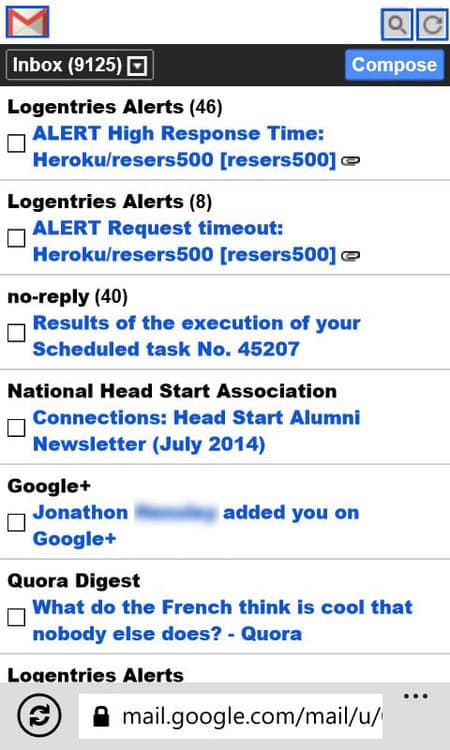MS spoofing Safari’s user Agent in Windows Mobile and it doesn’t matter
One of the most significant issues we saw was related to sites not detecting that IE on Windows Phone is a mobile browser and therefore providing desktop content. This often results in sites displayed with tiny text that you need to zoom in to read and then pan around. It also often means more data is transmitted over the phone’s data connection because the content isn’t mobile optimised. Images are large and many more ads are downloaded and shown.
- IEBlog

Yesterday I posted this screenshot of Gmail.com running on IE on Windows 8 Mobile. Three things immediately jump out at me:
- This is a band-aid fix. This may serve up more desirable versions of webpages but functionalities that are webkit dependent will not work leading to user frustration and development frustration. (If Windows 8.1 mobile is like Windows 8 Mobile, IE doesn’t support file uploads for instance)
- If you’re still using User Agent strings in the era of Modernizr and Head.js, you’re doing it wrong. Its a simpler and more elegant solution
Quite frankly, no one cares about checking for mobile IE users. If google is willing to serve up the above for Gmail, why should any of us care? I’m not arguing this is the right attitude but it is the reality MS is facing. At my current job, we have one client who actively checks for Windows Mobile glitches, and its only because they run a full-MS tech stack from ASP.NET to Surfaces, to Windows phones and of course desktops.